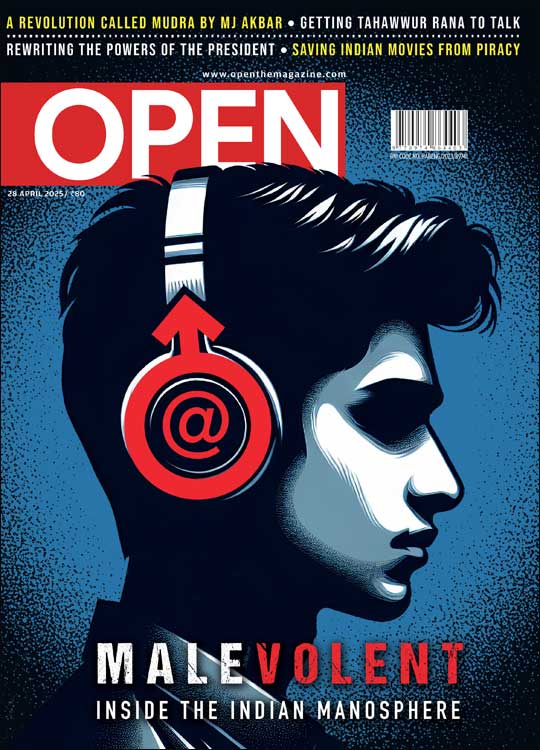The Hatch
Between a great business idea and a successful business lies yawning uncertainty. Enter the incubators.
 Anil B. Lulla
Anil B. Lulla
 Anil B. Lulla
|
16 Sep, 2009
Anil B. Lulla
|
16 Sep, 2009
/wp-content/uploads/2015/11/the-hatch-1.jpg)
Between a great business idea and a successful business lies yawning uncertainty. Enter the incubators.
Everyday, five days a week, some 35 aspirants of the Banking Services Exam dutifully gather in an empty classroom inside the lone private school in Upleata, a sparsely populated village in Gujarat’s Saurashtra region, about 120 km from Rajkot. Till July this year, an Upleata resident who wished to take this test would have had to relocate to Junagadh, to attend tutorial classes at PMP, a popular Gujarati chain of education institutes. Faculty members weren’t interested in coming to teach in Upleata, a random outpost in the desert, and no one wanted to invest in the infrastructure and books that a classroom would have required. Now, the classes come to them.
One PMP tutor standing in a classroom at the Junagadh headquarters teaches 100-odd students in various villages across the region, thanks to a company called VMukti. The out-of-class students watch the teacher on large LCD screens, sometimes just a wall; they can interact with him in real time as though they’re all in the same physical space; and they get the same quality of training without having to move out of their hometowns. These low-tech classrooms in Upleata, Dhoraji and far-flung parts of Gujarat are inextricably connected to the well-appointed offices of the Centre for Innovation, Incubation and Entrepreneurship, or CIIE, at IIM-Ahmedabad, the incubation centre where the company that created the video technology was nurtured and raised.
VMukti is an open-source, cloud-based HD video communication platform, conceptualised in September 2005, with a proof-of-concept launch in April 2006. VMukti, founded by brothers Kushal and Hardik Sanghvi, is an emerging software company that promises to save clients 80 per cent on bandwidth and storage infrastructure via the use of client/server-less, broadband-ready platform features. It received seed funding from CIIE at IIM-Ahmedabad, and boasts a development team across seven countries, representing the best expertise in their respective fields.
The simplicity and scalability of VMukti’s business model has made it CIIE’s proudest success story. But ironically, the Sanghvis are not IIM-A graduates. The incubation centre at India’s premier management school is yet to fund a single business venture of its own students for the simple reason that no one was interested in entrepreneurship. Life as a high-paid, globe-trotting executive at an investment bank or consultancy was more exciting than the trouble of starting one’s own businesses. But changing attitudes coupled with the recession have meant more MBAs are inclined to start up on their own with more than a bit of help from on-campus incubation centres.
Similar incubators have played a big role in shaping the destinies of what are today some of the biggest and best known companies. Think Google, Yahoo, Cisco and Hewlett Packard. The question, for those not clued in, is what exactly an incubator is. The answer is surprisingly simple. According to Apoorva Sharma, general manager of Amity Innovation Incubator (AII), when a student does an MBA and wants to set up a business of his own, the work is only half done. The incubator is what converts the idea into an enterprise.
The two-year-old incubator at Delhi’s Amity University, for example, provides students with everything from business plan formulation to trimming their ideas, help with research and the one thing everything else depends on—collateral-free debt. The funds come courtesy of SIDBI, with which Amity University has signed an MoU, plus some grants for small businesses. “Of course the recession and the consequent affect on pay packages have had an effect on students coming into the incubation centre. Students who would have otherwise pursued a job and started their own businesses later, are instead opting for it at the start,” says Sharma.
AII is working on 49 companies, of which 15 are start-ups by students of either its MBA programme in entrepreneurship or other courses. Abhimanyu Jalan, a first year student of that programme, is busy setting up his own brand of green tea: “I wanted my own business, and the incubator has been a great help in everything from getting funds to meeting venture capitalists.”
The incubator helped Jalan with the market research and fine tuning of the idea. Also on the anvil for him is his own stone crushing business that the incubator is helping him get a Rs 2 crore loan for. “There is a huge demand for stone chips in Assam and around, and due to their shortage, development projects are lagging,” he says.
There are others too. Gurneet Singh, a second year student of the general MBA programme, too, is trying to script his own story. He runs a company called Adsmith which aims to take advertising into what is otherwise an ad-free zone—the corporate floor. He plans to start selling ad space on paper coffee cups which he will then distribute free to corporates. He has over 250 companies such as HCL, EXL and Max New York Life registered with him. “I initially came to the incubator to get a job at a start-up so that I could learn the basics of entrepreneurship. But when I decided to start my own venture, they helped me do everything from making a business plan, test marketing my product and connecting me to venture capitalists who I would’ve had no way of making contact with,” he says. Amity’s own media planners are toying with the idea of using his services.
The incubator’s services are not limited to its current students alone. They’re more than happy to help ex-students like Rajat Kaushik, who has set up a firm called Nature Works. Kaushik, who did his BSc in biotech from Amity, works in the field of waste management and alternate energy production. “It taught me a lot of things. When I came here, I was raw… I didn’t even know how to write a business plan,” Kaushik laughs, adding, “They helped me out with intellectual property rights and even marketing.” He is now looking for investors for his business. “But the most important thing the incubator taught me was not to quit, and keep at it.”
IIM-A’s CIIE was born in 2001, created by eight professors as a cradle for research on innovation-based entrepreneurship. They spun the organisation into an incubator because they realised that most incubators in the country are run by tech institutes which are deficient in the area of management. “Any start-up requires a few basic things,” says CEO Kunal Upadhyay. “One is guidance. Unless an entrepreneur has done it a few times, he always needs guidance in marketing, strategy and market development. So, one kind of mentoring is that guidance. Then almost all need office space, financing, market reach, and the fifth challenge is building a team of smart people without having the money to pay them. An incubation centre, especially in a management institute, has the wherewithal to provide all these pillars of entrepreneurship.”
Situated inside the new campus of the institute, the incubation centre takes on companies that have innovations with mass market appeal. The centre is funded by IIM-A and various governmental agencies. Its office building also provides makeshift office space for start-ups. On average, CIIE works with one company for two years, till it is commercially independent. The method is simple: through the Internet and other platforms, CIIE invites proposals from innovators. These are screened for novelty by the management and then selected. The centre has about 15 faculty members who are actively involved in this, plus 20-odd IIM-A students. Once a project is approved, it is handed over to an in-house management team and experts who are part of the CIIE network. “We have a mandate,” says Upadhyay. “We want to work with companies which are working on some disruptive idea, either a disruptive technology or business model that will change the way an industry works. The other consideration is the social aspect of the idea. How many people can it reach out to, and what impact will it have on people’s lives? If someone comes with an idea in pure play retail, with nothing innovative, we don’t want it. But if a company focuses on high-tech retail analytics that looks into increasing footfalls, then it works. We also look at how ready the technology is. We are a management institute, without technical people, so come to us with a prototype. If someone asks us to help build something, it’s too much for us.”
Right now, CIIE is working with about 30 companies—15 are in post-revenue stage and making money, ten have their products ready, and five are just ideas. CIIE broadly looks at three categories of companies right now: infotech, because it breeds easy success stories; clean technology, because it’s the buzzword of the decade; and healthcare, particularly medical devices (one incubatee has created a safety alarm system that monitors fluid infusion in patients, while another has invented a steel nail that heals fractures quicker and cheaper than plaster of Paris or titanium).
Over at IIM-Bangalore, the Nadathur S Raghavan Centre for Entrepreneurial Learning (NSRCEL) has kept up the city’s image as a hotbed of ideas. Occupying pride of place in the leafy environs of the campus on Bannerghatta Road, the centre has consistently turned out successes. It started with an endowment from Infosys co-founder NS Raghavan in 2003, and has an enviable record. Of the 27 start-ups it incubated, for example, as many as 20 are flourishing.
At NRSCEL, the incubation period is 18 months, and each project is reviewed every six months. “We will hand-hold them completely during the period and help them with accounting, legal issues and drafting contracts. We also try to help them financially, though most manage to find investors. On an average, we spend Rs 35 lakh per company for the 18 months, while they pay just 10 per cent of it in the form of rent. Of course, once the company is incubated, they have to pay us 5 per cent of undiluted equity. Now that’s a very small sum for invaluable mentoring services. It’s a splendid environment,” says NSRCEL’s Chief Operating Officer A Suryanarayanan.
At 22, Abhishek Humbad is proud to be a rupee millionaire. He founded NextGen PMS, a clean-tech company that is today the toast of NRSCEL. Humbad’s firm helps large companies analyse and decrease their carbon footprint. His impressive roster of clients includes Intel, Infosys, Ministry of Renewable Energy, ICICI Bank and Mindtree, eco-conscious organisations all. “We map carbon emissions (both direct and indirect) and analyse them for hotspots, and help companies plan to reduce their energy consumption. Once we step in, companies can reduce costs, play up their green branding, improve their CSR [corporate social responsibility] quotient and even earn carbon credits,’’ he says. It all started when Humbad and two of his campus mates at BITS-Pilani set up a biogas plant that produced gas from food waste. “What we did in Pilani started as a fun thing. The idea came from a World Bank project that we worked on to get carbon credits in rural areas. We researched the subject for three years and presented papers. Clean technology soon evolved as a core business model. We presented the idea to NRSCEL in October 2008 and they accepted it,” adds Humbad.
Baskar Subramaniam, another NRSCEL beneficiary, says he is heavily into “micro-chunking”. Well, simply put, this means giving the advertiser options to target customers by region in the same primetime television channel slot that viewers across India are watching. His firm Amagi is working with television broadcasters, cable operators and ad agencies to structure targeted messages in different geographical markets. The company is building a technical structure that enables an English news channel viewer in Thiruvananthapuram to see a local ad spot in his own language, while a Kolkata viewer watching the same channel gets a different ad in Bangla. While the channel switches to ads, a frame-to-frame signal enables the regional multi-system operator in your city to cut the signal and play a local advertisement. Best of all (for Amagi), the ad is so timed that the viewer will not notice that his cable operator has blocked the signal and inserted the ad spot in its place. Amagi approached NRSCEL to see if the idea would work. The start-up received the green signal in May 2008. “Here, effectively, we are trying to set up a model to sell ad spots to different regions during primetime. It’s a win-win situation for everybody —the channel, the multi-system operator and the advertiser,’’ insists Subramaniam.
There are hundreds of ideas in India that should likewise find incubators to hatch them.

/wp-content/uploads/2025/04/Cover-Manosphere.jpg)











More Columns
Political parties echo anti-Pakistan sentiment after Pahalgam massacre Open
Indus treaty first step as India plans major retaliation Rajeev Deshpande
April 24 - Sachin Day Aditya Iyer